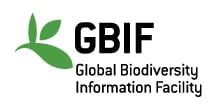Scientific Name: Chironomus sp Meigen, 1803
Classification:
Kingdom: Animalia
Phylum: Arthropoda
Class: Insecta
Order: Diptera
Family: Chironomidae
Description:
The distinguishing characteristics of the male Chironomus sp include the pattern of coloration on the abdomen and legs, as well as the shape of the superior volsella. Adult males have yellow legs with the apex of the femur, tibia, and tarsi appearing brown. The abdomen is pale brown, with tergites II–V exhibiting brown markings and tergites VI–VII featuring median brownish markings. The superior volsella is relatively stout and strongly curves to the ventromedial side. For the larva stage, the abdomen possesses comparatively long lateral and ventral tubules. The head exhibits a light brown postmentum and frontoclypeal apotome. The antennal blade is as long as the flagellum, while the mandible has three inner teeth. The mentum bears a 4th lateral tooth slightly shorter than the 3rd and 5th lateral teeth, and the internal apex of the ventromental plate bends downward. In terms of dimensions, the length of the insect ranges from 5.4 to 6.7 mm, with a wing length varying between 2.25 and 2.88 mm. The coloration of the head is yellowish brown, with the flagellum and maxillary palp appearing pale brown. The thorax is yellowish brown, with brown mesonotal stripes and a darkened posteromedian region. The sternum is also yellowish brown, while the scutellum is yellowish with a brownish postnotum, featuring a lighter anterior transverse stripe. The wing membrane is transparent, with most veins being pale brown, and the RM vein is darker brown than the FCu. The abdomen is predominantly pale brown, except for the brown anterior 2/3 of tergites II–V and the presence of median brownish markings on tergites I, VI, and VII. The legs are yellowish brown, with the femora, tibiae, and tarsi exhibiting brownish coloration at the apex.
Habitat & Distribution in Bangladesh:
The larvae of Chironomus spp. live in the benthos of freshwater habitats and form one of the most important functional groups in soft-bottom communities in freshwater ecosystems. They live in almost every type of aquatic habitat
Environment:
Marinewater, Freshwater, Brakishwater, Terrestrial
Comments:
They are semi aquatic. Larvae are hatched in water. But they fly away when they got matured.
References:
Ali S, Chakraborty T (1992) BANGLADESHER MITHA PANIR AMERUDANDI PRANI (A book on Freshwater Invertebrates of Bangladesh). Bangla Academy, Dhaka, Bangladesh, ISBN: 984-07-4051-2




